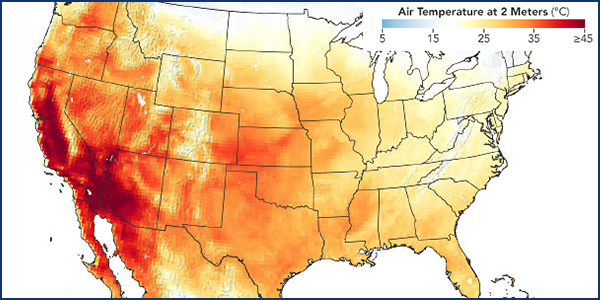CAISO’s Market Surveillance Committee last week said the ISO needs to consider implementing scarcity pricing as a way to obtain energy during heat waves and supply shortages such as those California saw in mid-August and over Labor Day weekend.
The MSC met Wednesday to discuss CAISO’s proposal for complying with FERC Order 831. The order requires ISOs and RTOs to raise the hard caps on supply bids from $1,000 to $2,000; offers over $1,000 require suppliers to justify their costs.
FERC issued the order in 2016, two years after the polar vortex of 2014 pushed natural gas prices in the Midwest and Northeast “to levels where marginal generation costs plausibly rose over the $1,000 offer caps then in place,” the MSC wrote in its opinion. “The spirit of the order was to allow supply resources to earn prices at least sufficient to recover their operating costs during periods of high generation costs, thereby helping to ensure reliable electricity supply during these periods.”
CAISO filed Tariff changes with FERC last September to adopt the $2,000 price cap. It is now weighing additional changes in a stakeholder initiative, including penalty pricing during times of scarcity.
“The CAISO market uses these penalty prices … to relax constraints in the market and set prices if needed to reach a solution,” the ISO said in its final revised proposal. “This includes the power balance constraint that requires supply to equal demand, which sets the system marginal energy cost under such conditions.”
Order 831 did not specify how an ISO or RTO should set its penalty prices but suggested it could file proposed modifications to shortage pricing.
CAISO proposed that “the market would set energy prices based on the amount of shortfall in supply to meet demand when the market must relax the power balance constraint and there are energy costs greater than $1,000/MWh. In this event, the market uses constraint penalty prices scaled to a $2,000/MWh power balance penalty price and would otherwise set prices based on the $2,000/MWh power balance penalty price.”
Storms of Cold and Heat
The heat wave that strained the Western Interconnection in mid-August and forced CAISO to order rolling blackouts was similar to the “cold storm” — or polar vortex — of 2014 that spread from the Rocky Mountains to New England and south to Florida and Texas, the MSC noted.
Prices during what some called the Western “heat storm” in August rose to $1,000/MWh or more and showed the need for higher-priced import offers during times of regional scarcity, the committee said in its opinion, which its three members unanimously approved.
“The experiences of mid-August again signal the urgency of such an initiative,” the committee said. “These conditions will likely grow more frequent, and the region is in need of a more coordinated approach to managing scarcity conditions.”
It urged CAISO to begin a scarcity pricing stakeholder initiative.
“We support the scarcity pricing or penalty value element of this proposal, but we support them as an interim measure that’s an improvement over current practice,” committee member James Bushnell, a professor in the Department of Economics at the University of California Davis, said Wednesday. “At the same time, we urge the CAISO to begin a more formal stakeholder process focused specifically on scarcity pricing so that a lot of the issues that were raised in this initiative could be dealt with in a more holistic way.”
Scarcity pricing is triggered in markets when systems become so strained that reserve margins meant to protect the grid from collapse are threatened.
Proponents say it is a way to procure resources during extreme shortages or even an incentive to build resources to help prevent future emergencies, but critics say it holds the potential for market manipulation and excessive prices. Other organized markets have struggled with whether to adopt scarcity pricing or how best to implement it.
Advocates have contended that SPP should adopt scarcity pricing, and FERC has pointed out the RTO uses out-of-market mechanisms to ensure generators come online as a way to avoid it. (See SPP Shortfall Leads to Scarcity Pricing Calls and FERC OKs SPP Scarcity Pricing Change.)
MISO is re-evaluating the effectiveness of rules behind its scarcity pricing model, contemplating upping the value of lost load and changing the operating demand curve on which the model is based to increase emergency pricing and raise incentives. (See MISO Revisits Scarcity Pricing Rethink.)
CAISO’s Order 831 proposal goes next to the Western Energy Imbalance Market for an advisory vote on Wednesday and to the ISO’s Board of Governors for final approval on Sept. 30.



